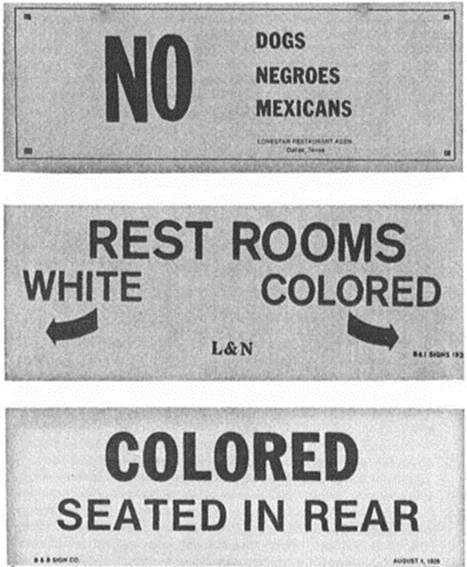Sarah Schindler’s Architectural Exclusion: Discrimination and Segregation Through Physical Design of the Built Environment , is a thought provoking article about the undercover and subtle ways that racial segregation has continued in this country without any legal mandate. Throughout the article, Schindler exposes many ways that both city and federal government created man-made barriers and structures as a way to separate different groups of people ranging from income-level to race. Since racial discrimination has been outlawed, there were other ways to maintain racial hegemony such as making highways and wall to separate race from coming into contact with one another(1942). Her article explains the many ways these methods have negatively affected society even to this day.
The first example of exclusion that is used can be found in New York City, our nation’s largest city. The city planner intentionally made it that there would be low hanging overpass as a way to keep bus riding minorities from entering a certain part of time. Since discrimination at this time was only thought to be through law, many didn’t realize that it can also be physical. Her second example is of the Metropolitan Atlanta Regional Transit Authority(MARTA). The MARTA was originally used as a way for many of South Atlanta’s majority black residents to enter the city to enter the main city and then have a direct route back to their homes. North Atlanta being majority white, didn’t want to risk of giving access of their part of town to the southern blacks, so the MARTA was never expanded north(1939). The problem that is faced today, is that many white people are starting to move into the city and other parts of Atlanta. This is causing the MARTA to become overpopulated since these weren’t the originally designed patrons.

After explaining this different practices that have been used over the last 50 years, Schindler asks the question of the intention of this creations. She explains that there were always a the intention of separating different groups and by placing a bridge or an overpass in a certain area, there would be no suspicion of haneous intention. This process would continue with a mixture of government mandated buildings and structures in different parts of town as well as banks refusing loans to certain groups to the point that it is common to find entirely minority parts of town. Schindler tries to give many different solutions to problems. Judiciary intervention wouldn’t work because there wouldn’t be any intentional discriminatory practices when these city structures were first planned(2018). The only major solution is which is offered is one in which structures are created that are meant to bring more inclusion to all groups. If cities were now forced to have a modern City Revisionary Ordinance, similar to the Disabilities Act, there would be accessibility of different minority groups to enter these once segregated parts of town(2021).

In conclusion, Schindler explains how its the responsibility of society to take an open look at the different decisions that are made. One may see a bridge or a crosswalk as just a physical object, but it may have more nefarious purpose as a way to discourage groups of people(2024). When we are all able to see the damage that has been caused by those before us and those happening now, we will then be able to cure the disease of racism in our society. Just as laws were being used fifty years ago to separate people, today bridges and park are continuing it.

Bibliography
Schindler, Sarah. “Architectural Exclusion: Discrimination and Segregation Through Physical Design of the Built Environment.” Yale Law Journal –. The Yale Law Journal, Apr. 2015. Web. 25 Jan. 2016.
